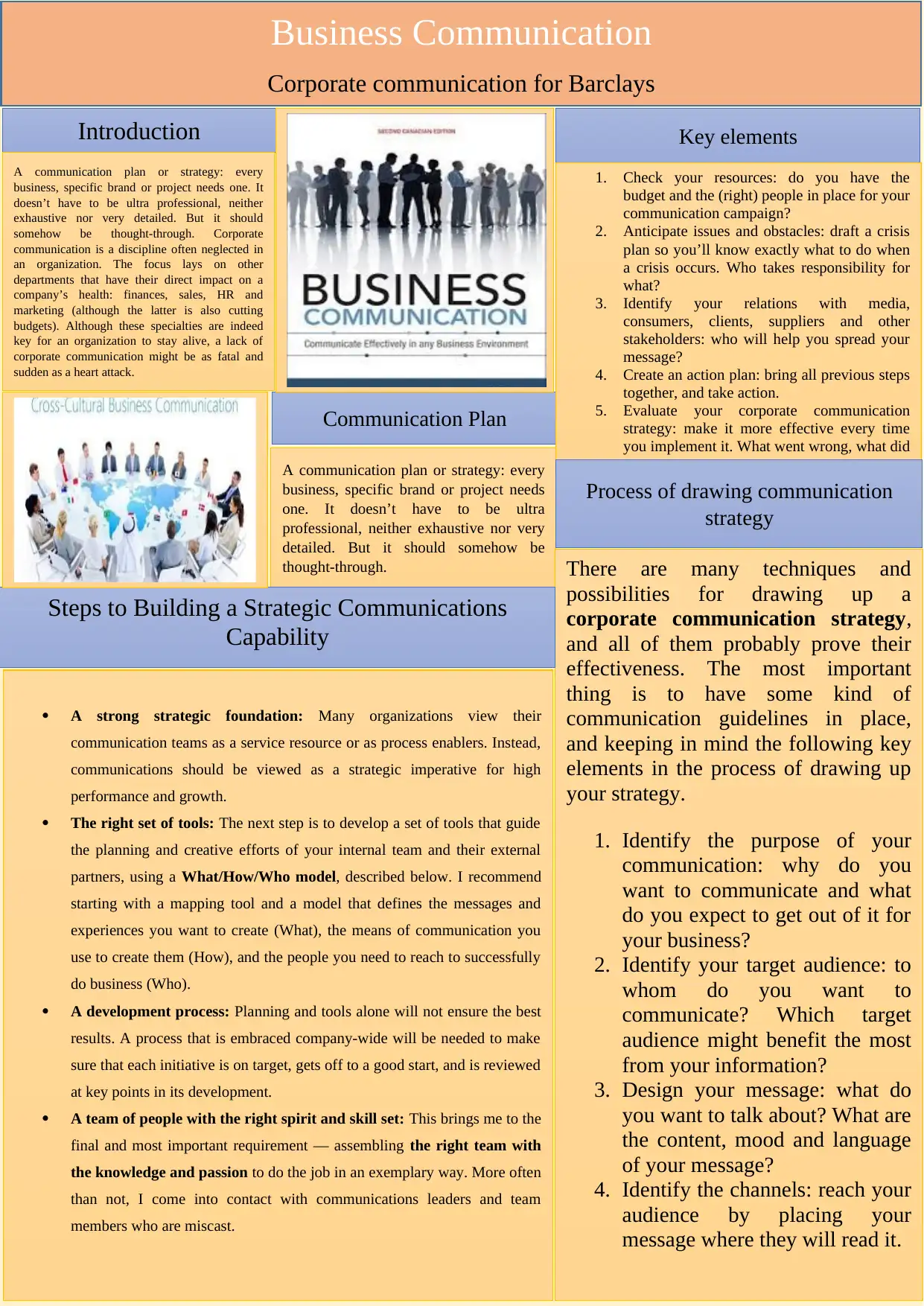Analysis of Corporate Communication Strategy for Barclays
VerifiedAdded on 2020/06/04
|1
|1360
|65
Report
AI Summary
This report delves into the multifaceted world of corporate communication, emphasizing the importance of a well-defined strategy for business success. It outlines key elements essential for crafting effective communication plans, including identifying the purpose of communication, understanding the target audience, designing the message, selecting appropriate channels, and allocating resources. The report stresses the need for a strong strategic foundation, the development of effective tools, a streamlined development process, and a skilled team. It also highlights the significance of building a strategic communications capability, which requires a communication plan, and the understanding that corporate communication is critical for an organization's health, often overlooked in favor of other departments like finance, sales, HR, and marketing. The report emphasizes the necessity of a well-thought-out communication plan for every business, brand, or project, and the importance of anticipating issues and obstacles.







![[object Object]](/_next/static/media/star-bottom.7253800d.svg)